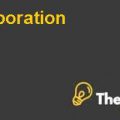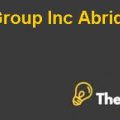The Tase Of Tata Case Study Solution
Abstract
The case illustrates the strategic alternatives and the business strategies taken bytheTata group in order to expand in the Indian markets and other international markets.Over the period of time, the company under the leadership of Rattan, develop the new strategies including the decision to make Tata Steel, Tata chemicals and Tata Motors one group with unified shares and stocks in the market.This allowed the company to maintain the synergy and enthusiasm along with the performance throughout the group, making the performance a sustainability action in the market.
In addition, Tata group maintained the unique corporative culture in order to provoke and support the creativity of the individuals.It focused on the decent realized approach in creativity while a centralized approach in the communication. Such allowed the company to maintain the team synergy between the different groups and also allowed to reduce the informational, making company progress collectively in the market.
Though the unified communication strategy and open culture has allowed Tata group to effectively lead India and international markets, however, the pursuance of such strategy in future is under jeopardy, since maintaining the growth and market leadership with similar strategy is complex.
Keywords: competitive edge, SWOT, financial performance, sustainability..
Tata Group is a multinational company of India, with its headquarters in Mumbai. It was established by Jamsetji Tata in 1868 and started receiving recognition across the world after purchasing numerous companies globally. It is one of the largest conglomerates present in India and is owned by a charity, Tata Sons. Each of its subsidiaries are operated by its own shareholders and board of directors. Currently there are thirty listed subsidiaries of Tata Group. Most recognized among them are Tata Global Beverages, Tata Motors,Tata Consultancy Services Ltd, Tata Communications, Tata Steel, Tata Chemicals and Taj Hotel. Tata Group is operating in six out of seven continents and in more than hundred countries globally. A number of Tata Companies have are currently in the leading group of their respective industries. For example, Tata Communications is currently number one internationally, TCS is the second largest company providing IT services in respect to profit, Tata Global Beverages is also the second largest company worldwide. Tata chemicals and Tata Steel are also considered leaders in their industries. (Tata group profile, 2017)(Tata_Group, 2017)
Current Situation:
The company’s overall performance in the past year was good. As most of its subsidiaries made a huge profit in their respective industries. If we analyze the financial statements of Tata Cold Beverages for the year 2011-2012, we can see that it profit before tax was five hundred and seventy four crores. Most of its sales were generated from Tetley brand and Tea alone generated seventy percent of its total sales. (Tata Global Beverages Annual report and financial statements 2012-13, 2012) Moving onto another big subsidiary of Tata Group; Tata Motors, if we analyze its financial statements then we can see that Tata Motors alone generated revenues of 1, 89,629 crores, and a profit of 9,893 crores indicating the financial position of Tata Group. (Tata Group 68th Annual Report 2012-13, 2013) Tata consultancy services generated a net profit of 10,413 crores in the year 2011-2012 and revenues up to 48,894 crores. (Tata Consulatncy Services Annual Report 2011-2012, 2012) As the overall profit of Tata group depends upon the profit that its individual subsidiaries generates, these profits depicts the financial position of the Tata Group in the previous year.
Strategic Posture of Tata Group
Tata Group thrives to improve the quality of life of its consumers and customers. Its practice of returning the society from what it earns itself has developed a relation of trust with its employees and customers. (Values-and-purpose, 2017) Its vision for year 2015 is that it wants to be significant in the industries it is operating in. (vision-mission-values, 2017)
The Tata Business Excellence Model, developed in the year 2002 gave a new look of the values and objectives of the company. It is going under a number of changes to become savvier towards the different sectors of economy. And the number of companies that are opting for TBEM has increased from thirty to fifty four. This does not only include the subsidiaries of Tata Group itself but other profit centers as well. The company’s core values are modified so that it grows with the speed the technology.
Its leadership now also monitors the progress apart from setting the goals and targets. Other than that it has also started focusing on innovation to maintain the position it shares in the market with its competitors, and internally its focus is on employees cooperating and communicating clearly to share the knowledge and information with each other. Though it takes in to account its employees suggestions and ideas but most of the burden and responsibility lies with the senior staff. Its main objective is to maintain a balance of its employees individually and with respect to the company as well. To be precise, it simply has brought certain changes in its leadership to become more visionary, by giving the due value to its partners, customers and employees. It also has brought certain changes in its management process which includes different operations of business to grow globally. (New objectives, assessment norms in TBEM recast, 2017) Its objectives for future further includes to involve in such businesses that are in interest with the nation, to introduce new technology, to expand in newer markets, and last but not the least to spend more in the Research and Development Department. (tata-group, 2008).......................
This is just a sample partial work. Please place the order on the website to get your own originally done case solution.











